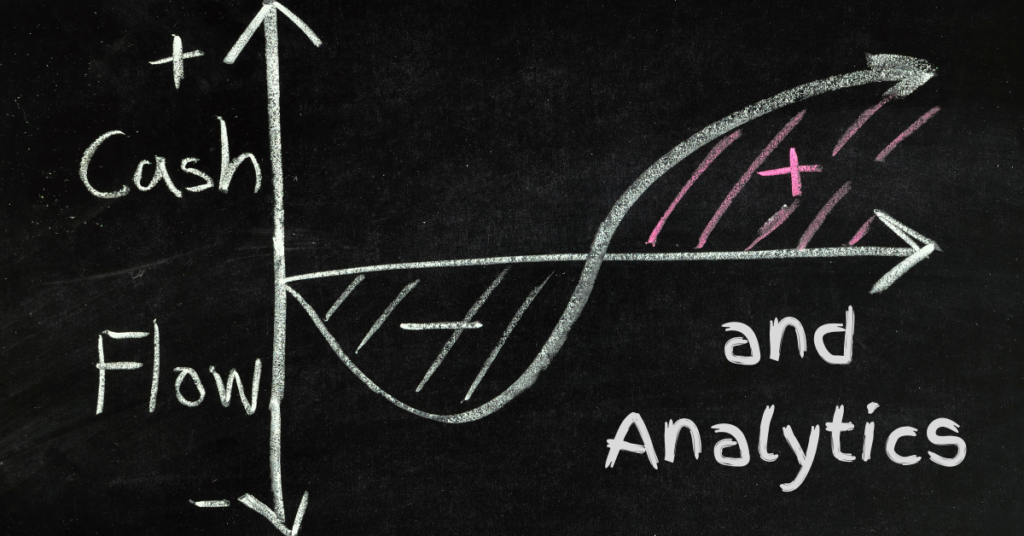You launched a business or are in the process of doing so. You know that many businesses use their business data to perform at a higher level. Yet, when you think back to past math classes, you start to feel anxiety. And learning Microsoft Excel or Google Sheets? Forget it…tech isn’t your friend. Maybe that’s because you didn’t have the right teacher. That’s why this article aims to rewrite the script and get you started on the right foot. We’re talking about the steps to get you moving forward on mastering data analysis.
Data Sources
You might think I’d start with data tools or statistical analysis. However, these aren’t the best places for you to start mastering data analysis.
Instead, it can be easier to start by understanding the data you already have in your business. After all, these are the data that you will most likely be working with. As you learn about data tools and methods, it helps to have your own data in mind. This will help make the information you learn more concrete.
You probably have data in several different locations like a CRM, email service provider, website sales data, point-of-sale system, google analytics, and social media platforms. Take some time to review each of your applications to see where you have information that is important to your business.
Find out whether your data can be downloaded in an Excel file or comma-separated variable (CSV) file. If so, download a file so you can see what the contents look like. If the data are contained in a website database, contact your website hosting service to find out how to access the data.
Understanding the data you already collect is critical to making the most of data-driven decision-making.
Metrics
A second key element to mastering data analysis is your understanding of metrics relevant to your business. Now, I don’t want you to have any anxiety about this. Nearly all the metrics you want to understand will be uncomplicated and intuitive.
You’ll want to know obvious metrics like revenue, expenses, and profit margins as you build your business. Revenue is the cash coming in, expenses are the cash going out. Profit margin tells you what percentage of every dollar in revenue is profit for your business. You can calculate profit margin as:
\( \begin{equation} \text{Net Profit Margin} = {\frac{\text{(Revenue – Expenses)}}{\text{Revenue}}}*100 \end{equation} \)Across your various products and services, you will need to calculate revenue and profit for each. In addition to these metrics, you will want to know metrics specific to your industry and business model.
If you use email marketing, you will want to track your open rates, click-through rates, and conversion rates. If you use social media, you will want to understand how engaged your audience is with your content.
If your business model relies on inventory and staffing, you will need to track resource and labor needs over time.
There are many more key performance indicators (KPIs) you can identify for any industry or business function. You don’t need to track them all. Instead, track the ones that are most relevant to how your business operates.
Data Analysis Tools
Alright, this is the section where you might start getting sweaty palms. But it shouldn’t be. So, take a deep breath, and let me be your guide to mastering data analysis tools.
You do not need to learn data science programming languages to use your business data effectively and strategically.
The best place for you to start is by learning what you need in either Microsoft Excel or Google Sheets. Notice that I said, “…learn what you need…”
Both of these programs include a lot of capabilities. However, most people can become quite proficient with either one by learning a small portion of functionality.
Regardless of which program you choose, you will want to learn a few specific things at the outset:
- How to refer to cells in a worksheet (e.g., row and column referencing…cell A1 is the upper left corner of a worksheet)
- Basic formatting of cell colors, fonts, and borders
- A few fundamental formulas (e.g., IF, COUNT, SUM, AVERAGE, etc.)
- How to create basic line charts and bar charts.
The best way for you to learn these tools and functions in Excel or Google Sheets is by working on real projects…working with your data.
There are lots of great tutorial courses for both of these tools. However, they tend to focus on what a professional analyst needs. Instead, you want to find tutorials that are aimed at teaching you what you need to know to accomplish the task at hand.
As your skills grow, you will learn more complex functionality. But when you focus on your immediate needs, you’ll make progress faster than you might believe.
Basic Analysis Methods
This is the second area where you might feel some anxiety on your journey to mastering data analysis. Everyone gets nervous about methods. In fact, even if you had a statistics course in school, chances are you don’t remember most of it.
I’ve seen this happen to many really smart people, and it’s okay if you’re one of them. It isn’t the last word in your journey to grow and scale your business with data. In fact, having to address this anxiety is the most common starting point.
I want you to take another deep breath.
You do not need to earn a PhD in statistics, become a data scientist, or even learn the same level of skills that a professional data analyst has.
Instead, you can become very proficient in analyzing your business data with a few simple tools:
- Descriptive statistics….this includes all metrics used to measure business processes.
- Hypothesis testing
- Forecasting
- Linear regression
You can learn an amazing amount of information from the first three methods on this list alone. If you also earn linear regression, you open a huge additional world of methods such as key drive analysis.
Before you convince yourself it’s all too hard, you must keep two things in mind. First, if you had a bad experience learning statistics in the past, it was probably your teacher’s fault (really…many of them aren’t very good). Second, it’s harder to learn these methods when you don’t have a relevant use case in mind.
Learning basic analysis methods in school is challenging because students aren’t invested in why they should learn. But you have a very relevant and important reason to learn now.
Conclusion
If you feel like a novice when it comes to using data to improve your business, you’re not alone. Every entrepreneur goes through the same feelings…and those feelings are completely normal. The steps in this article are a road map taking you from novice to pro in mastering data analysis.
You’ll have questions along the way. That is expected, and I’m here to help you.
Sign up for my email list and you’ll get weekly content covering all these topics and more! My mission is to help entrepreneurs become proficient at growing and scaling their business with data. Your success is literally my goal.
Welcome to the community!




